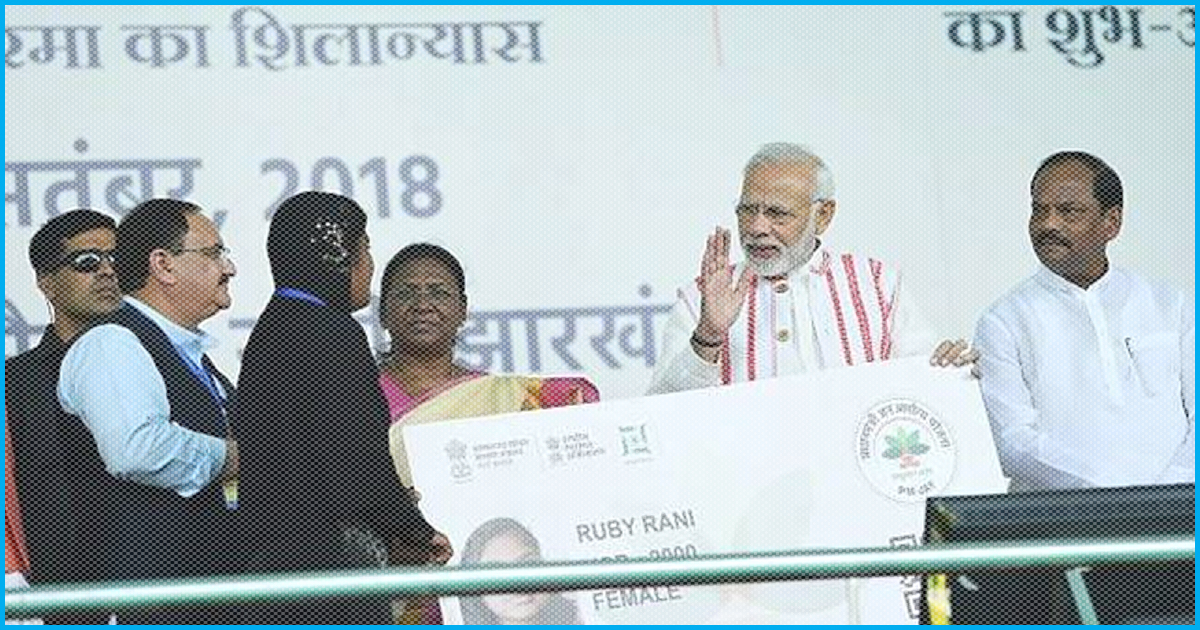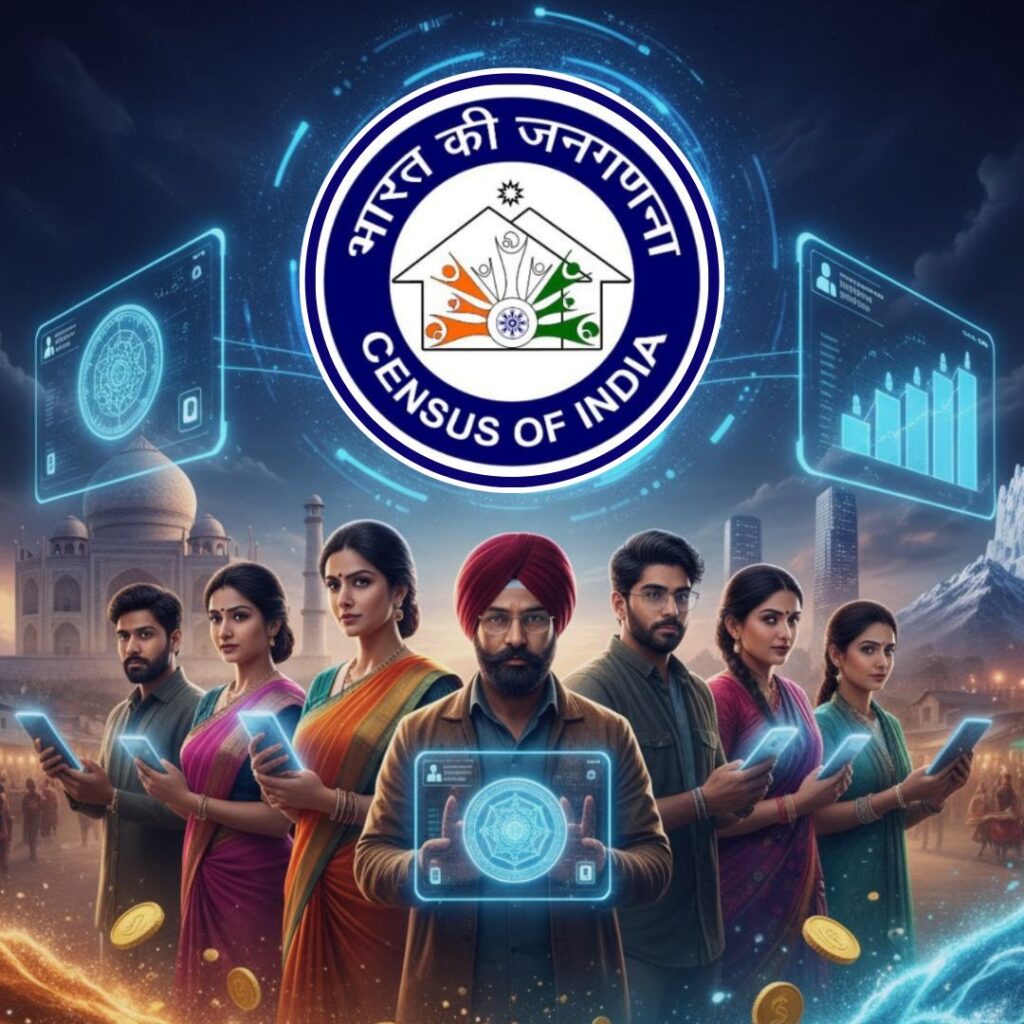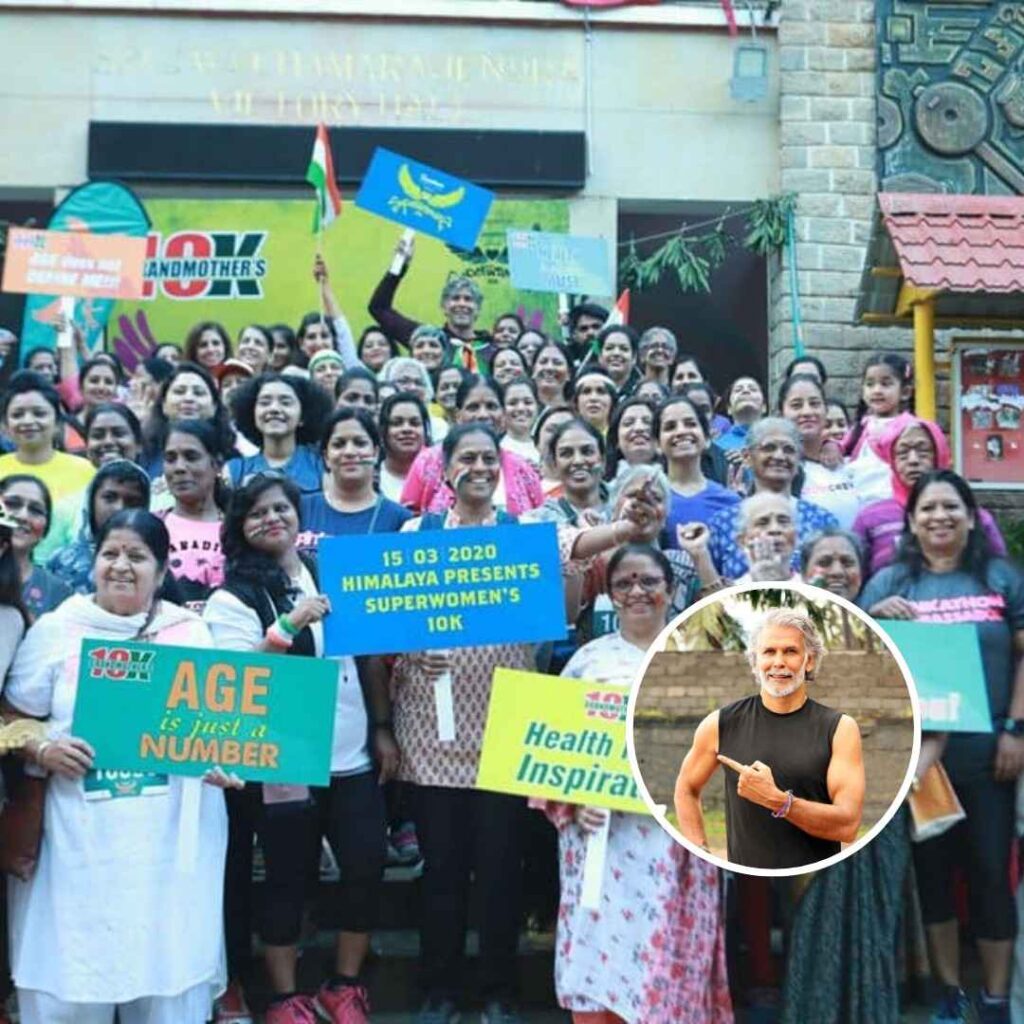After over nine months of the scheme’s announcement during the 2018 Budget, Prime Minister Narendra Modi on September 23 finally launched the ambitious Ayushman Bharat -Pradhan Mantri Jan Aarogya Yojana (AB-PMJAY)’ scheme which is deemed as the world’s largest government-funded healthcare programme. The scheme rolled out from Ranchi in Jharkhand, is aimed at providing Rs 5 lakh medical coverage to about 50 crore Indians. The launch event was attended by Union health minister JP Nadda, Jharkhand chief minister Raghubar Das and the state governor Draupadi Murmu.
Reportedly, during the launch of the event, PM Modi described it as a “game changer initiative to serve the poor.” He also said that the helpline number for Ayushman Bharat- 14555- should be memorised by everyone.
What is the Ayushman Bharat Scheme?
Reportedly, the 71st round of National Sample Survey Organization (NSSO) revealed that over 85% of rural families and 82% of urban households have no access to healthcare insurance. The Ayushman Bharat scheme aims to provide health assurance to 10 crores (approximately 50 crore Indians) economically deprived families belonging to both rural and urban India, who will be given a medical cover of Rs 5 lakh annually.
A total of 1354 packages have been included in the scheme by the health ministry under which important treatment and surgeries like a coronary bypass, stenting and knee replacements among others will be provided at 15% to 20% cheaper rates than provided under other Central Government Health Schemes, reported The Times Of India. Moreover, a beneficiary can avail the services at the point of service in a cashless and paperless manner.
Who is eligible?
The beneficiaries have been identified and decided upon on the basis of the latest Socio-Economic Caste Census (SECC) data. Reportedly, the beneficiaries have been identified on the basis of deprivation categories such as D1, D2, D3, D4, D5, and D7 respectively. For urban areas, entitlement criteria will be determined on the basis of 11 occupational categories. Moreover, beneficiaries of Rashtriya Swasthya Bima Yojna (RSBY) will also be included.
National Health Agency (NHA), the apex body which is implementing the scheme, has launched a website and a helpline number for prospective beneficiaries to check if their names are there in the final list. On the landing page of the website, one has to enter their active mobile phone numbers along with the CAPTCHA code. An OTP will be sent to the mobile number which needs to be entered. Mobile number/Ration Card Number SECC Name or RSBY URN can be used to find out if an individual is eligible to become a beneficiary or not. If one’s name fails to appear in the list, then they can contact a nearby Ayushman Mitra.
How can one avail the scheme?
There is no limitation on the size of the family or age, and an Aadhaar Card is not mandatory for beneficiaries to avail the scheme. Under the scheme, the beneficiary patients will have to approach an empanelled hospital where ‘Arogya Mitras’ will assist them in admission. Reportedly, each empanelled hospital will have an ‘Ayushman Mitra help desk’ where the identity verification will be done using Aadhaar or any other ID like voter or ration card.
A letter with QR codes will be given to the beneficiaries which will be scanned by the doctors and a demographic authentication will be conducted for identification which will help to verify the person’s eligibility. After this, the hospital will select a package and check balance as well as submit supporting evidence required for the treatment. It is only after this that the treatment will begin.
Moreover, members of the beneficiary families will not have to pay anything in case of hospitalisation, provided they visit empanelled hospitals. According to Firstpost, the statement said, “The objectives are to reduce out of pocket hospitalisation expenses, fulfilment needs and improve access of identified families to quality inpatient care and daycare surgeries.” So far, over 8,735 public and private hospitals have been empanelled for the scheme and 15,686 applications for hospital empanelment have been received.
How has the budget for the scheme been allocated?
The scheme will work on a 60:40 ratio where the Centre will fund 60% of the total budgetary cost of the scheme and the rest will be meted out by the states. Times Of India reported Niti Aayog member, VK Paul, who is the chief architect of the scheme as stating that in the current fiscal, the burden on the Centre is going to be around Rs 3,500 crores.
During the annual budget announcement, finance minister Arun Jaitley had said that along with providing health insurance, the government also aims to create health and wellness centres across the country for which Rs 1,200 crores were allocated for the current fiscal, while the Centre had made a provisional allocation of Rs 2000 crores for PMJAY. However, Paul had told News18, “We are six months into this fiscal and we also know that only 27 states will go immediately into operations. Therefore full uptake is still be building up. Accordingly, Rs 1,500 crore more has been sought, so we now have Rs 3,500 crore as the central government budget.”
States which have opted out of the scheme
While as many as 30 states and Union Territories have signed MoUs with the Centre and is set to roll out the scheme over the next couple of months, five states have opted to stay out as of now. Reportedly, Telangana, Odisha, Kerala, Delhi and Punjab have refrained from signing the MoU on the ground that their health care schemes are better than Ayushman Bharat and hence the scheme won’t be implemented in these states.
Odisha CM Naveen Patnaik has pointed out that his state’s Biju Swasthya Kalyan Yojana covers many more people than the Central scheme and provides Rs 7 lakh to women as opposed to Rs 5 lakh. Kerala Finance Minister Thomas Isaac had called the programme ‘a big hoax’ in an interview with The Indian Express. He also questioned as to how the scheme would be implemented on such a large scale.
Telangana refused to join the bandwagon on the grounds that its very own Aarogyasri scheme covers 70% of the state’s population, whereas the Central scheme will only benefit 80 lakh people, reported Deccan Chronicle. While Delhi refused to join the scheme on the premise that the Ayushman Bharat scheme only proposes to cover just six lakh families which is a mere 3% of its two crore population. Punjab government also expressed concerns and refrained from signing the MoU and stated that its Bhagat Puran Singh Sehat Bima Yojna (BPSSBY) covers many more families than what was proposed by the Centre for the Ayushman Bharat scheme.
Also Read: Important Highlights Of The “Union Budget 2016-2017” Announced By Arun Jaitley Today












